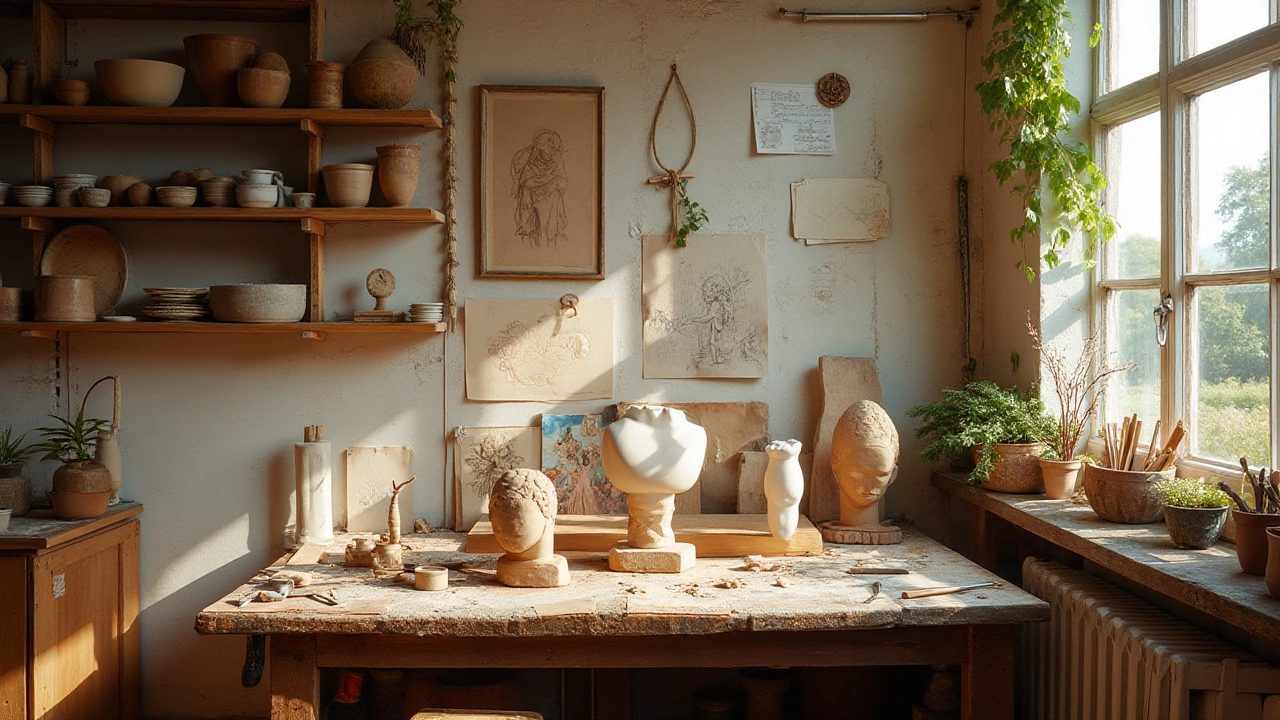Beginner's Guide: Easy Tips to Start Creating Art Today
If you’ve ever stared at a blank canvas and wondered where to begin, you’re not alone. The good news is that you don’t need fancy gear or years of study to make art you enjoy. This guide pulls together the most useful basics from painting, drawing, sculpture and even digital work, so you can jump straight into making.
Pick the Right Materials Without Breaking the Bank
The first step is choosing tools that are affordable and forgiving. For sketching, a simple pencil set (HB, 2B, 4B) and a sketchbook are enough. If you want to try watercolor, grab a small pan set and cheap student‑grade paper – you’ll still get vibrant washes without costly supplies. Acrylics are great for beginners because they dry fast and clean up with water. A basic set of three colors (red, blue, yellow) plus black and white lets you mix almost any hue. For sculptors, start with air‑dry clay or even recycled materials like cardboard; they’re cheap and easy to shape.
Learn One Simple Technique at a Time
Trying to master everything at once leads to frustration. Pick a single technique and practice it until it feels natural. For drawing, focus on contour lines: trace the outline of simple objects like a mug or a fruit, paying attention to the pressure of your pencil. In watercolor, practice the wet‑on‑wet method – wet the paper first, then drop color in and watch it bleed. With acrylics, start with basic layering: block in a thin base color, let it dry, then add details on top. Sculptors can begin with hand‑building coils or slab building, joining pieces with a little water before they dry.
Consistent, short practice sessions work better than long, occasional ones. Aim for 15‑30 minutes daily, even if you only doodle a quick shape. Over time you’ll notice improvement in control, confidence and creativity.
Another tip is to copy works you love. Pick a painting or drawing that catches your eye, and try to reproduce it as closely as possible. This isn’t cheating – it’s a proven way to learn color mixing, brushwork and composition. Keep your copy separate from your original pieces so you can see the difference later.
Don’t forget to step back and look at your work from a distance. A few feet away, you’ll spot mistakes in proportion or color that look fine up close. This habit helps you refine details without over‑editing.
When you feel ready, start mixing media. Try adding ink washes to a pencil sketch, or gluing textured paper onto a painted background. Experimentation sparks new ideas and keeps the process fun.
Finally, share your progress. Posting a photo on a forum or showing a friend gets you feedback and encouragement. Even if the comments are simple, they remind you that you’re moving forward.
Art is a journey, not a race. By picking the right supplies, focusing on one technique, and practicing regularly, you’ll build a solid foundation. Use this guide as a checklist and keep adding new skills as you grow. Happy creating!

3 Dec 2024
Embarking on the journey of sculpture art can be both exciting and rewarding. This guide offers essential tips and insights for beginners, covering the basics from understanding materials to exploring different techniques. Discover how to set up your workspace and find inspiration for your creations. Learn about fascinating facts and the significance of patience, creativity, and practice in mastering the sculpting craft.
Continue reading...
